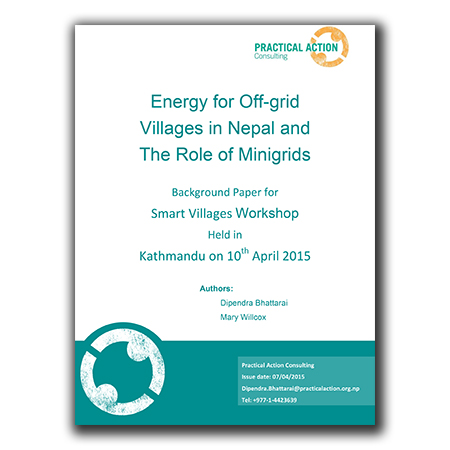Nepal’s energy situation reflects its challenging terrain (over 75% mountainous) and very low income levels (UNDP, 2013). About 25% of Nepal’s 26.5 million people live below the poverty line, which varies by region but averaged 19,261 NPR per year (or about USD 0.75 per day) in FY 2010/2011 (Central Bureau of Satistics, 2012). The nation is among the poorest countries in the world, with per capita annual income of USD 742 in Fiscal Year 2011/2012 (Ministry of Finance, 2012).
The share of traditional biomass in Nepal’s primary energy consumption is about 83.7% (FY 2010/11), of which firewood accounts for the major part. Petroleum products provide 10.4% of primary energy use, coal 2.9%, and grid-connected power generation (almost all from large hydropower) 2.2%. The share of off-grid renewable energy resources is only 0.7% (Ministry of Energy, 2012). If biomass, the largest share of primary energy consumption, is broken down by consuming sector, 90% is used by the residential sector followed by transport 3.9%, industrial sector 3.6%, commercial 1.3% and agriculture 0.6% (Water and Energy Commission Secretariat, 2010).
Despite the availability of extensive hydropower potential – of the order of 42,000 MW – Nepal has one of the world’s lowest per capita electricity consumptions, averaging 146 kWh/person annually for FY2010/2011. It is widely accepted that the shortage of power and frequent power outages have severely constrained economic growth in the nation.








